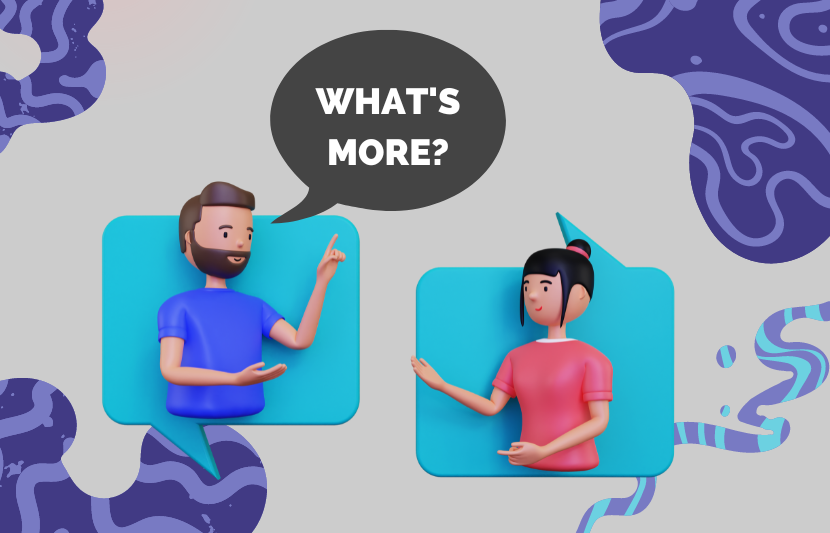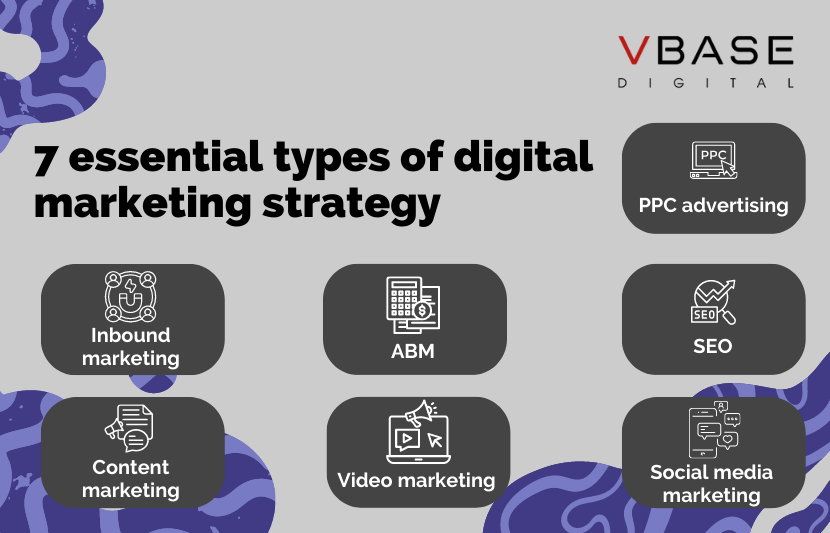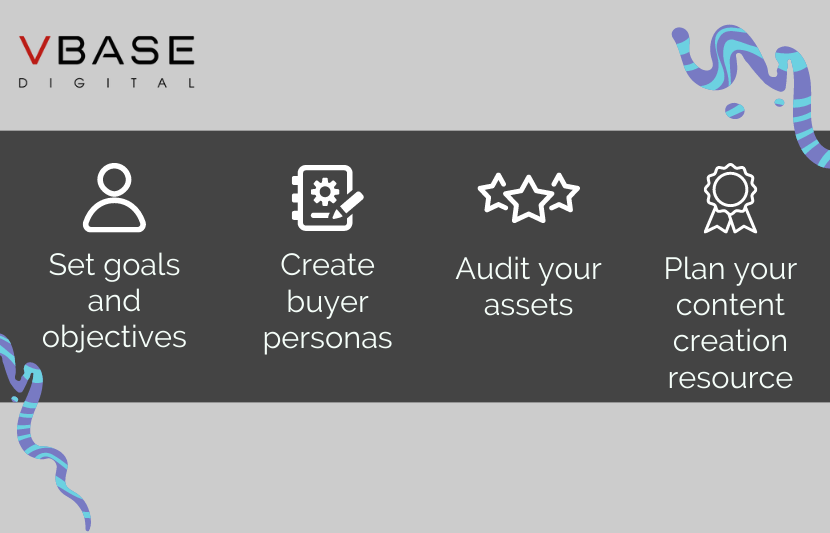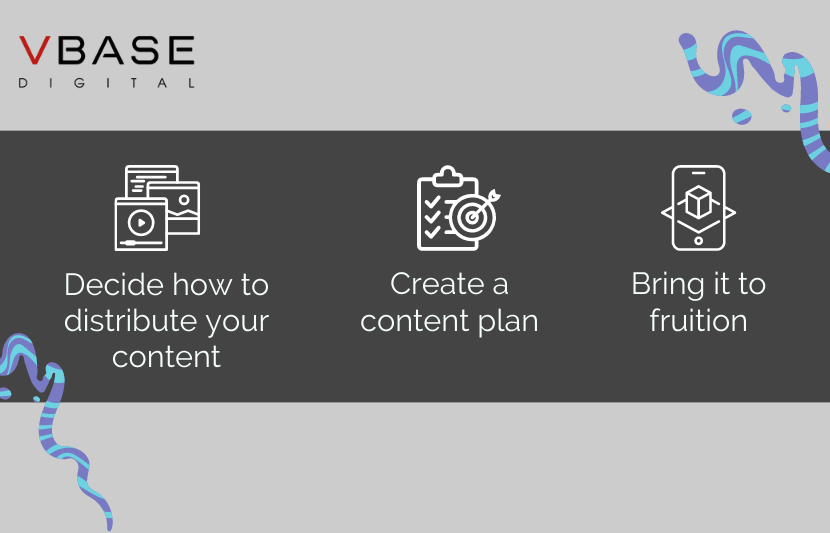Nowadays, the majority of our content consumption takes place in the digital world. To keep up with our reliance on technology, marketing is also going digital. This change requires brands to be present in the digital world. A successful digital presence for your brand requires a solid digital marketing strategy.
Understanding Digital Marketing Strategy
A marketing strategy is a detailed, structured plan of a company’s promotional efforts across a wide range of platforms and channels. A marketing strategy typically includes objectives, target audience profiles, content creation steps, key performance indicators, and other components.
Marketing strategy vs. Marketing tactics.
The term digital marketing strategy is often confused with other related concepts. Furthermore, a marketing strategy is actually a comprehensive game plan outlining how to reach your target audience and convert them into paying customers. It acts as a blueprint that guides you toward your company's unique marketing goals.
A marketing tactic is a specific action that you take to carry out your marketing strategy. This also includes
- Write blog posts
- Get customer feedback on social networks
- Send emails
- Design advertising templates
Marketing strategy vs. Marketing campaign.
Marketing campaigns are closely related to marketing strategies, but it's important to understand the difference between the two. A marketing strategy with the big picture in mind.
It defines your overall business goals, and customer goals, and how to achieve both. Moreover, a marketing campaign is a promotion aimed at achieving a specific goal according to your strategy, rather than an overall business goal.
Marketing campaigns usually have specific start and end dates. You can launch campaigns to promote new products, increase traffic, or attract new customer demographic.

7 essential types of digital marketing strategy
#1. Inbound Marketing
Inbound marketing refers to the entire ecosystem of strategies, tools, and tactics marketers use to convert website visitors into paying customers.
Furthermore, inbound marketing is a holistic approach to attracting, evaluating quality, nurturing, and delighting customers and prospects. This is not a one-off or something that is deployed immediately or temporarily. Instead, it is only focused on long-term relationships with its customers.
#2. Account-based Marketing (ABM)
Account-based marketing (ABM) is a powerful B2B marketing strategy that allows you to target and select specific accounts. Its purpose is to help sales and marketing teams move leads through the sales funnel faster. Also, ABM allows you to target your most important accounts.
Additionally, ABM does not follow a common marketing approach. Instead, generate a personalized message for your target account. With ABM, sales and marketing teams work together to identify key customers and design personalized campaigns for them. ABM fosters teamwork by focusing teams on moving account information through the sales pipeline. Similarly, you can accelerate your sales cycle with ABM as the key decision maker and nurture all other relevant prospects simultaneously with specially crafted content.
#3. Search Engine Optimization (SEO)
Search Engine Optimization (SEO) is the process of optimizing your website and its content to achieve higher search engine rankings and increase organic traffic to your website. It includes many different tactics, such as:
- Create high-quality content
- Optimize content around keywords and user needs
- Embed meta information
- Make sure your website is optimized for search engines.
Ultimately, SEO aims to organically attract exemplary visitors to generate more leads and sales.

#4. Content Marketing
Content marketing is all about answering people's questions and helping them understand content rather than interrupting them with unsolicited ads. It includes content like blog posts, landing pages, videos, podcasts, infographics, white papers, ebooks, case studies, and more.
In most cases, content marketing has multiple goals. You can use it to:
- Increase brand awareness
- Increase brand loyalty
- Educate your target audience
- Convert and take care of potential customers/leads.
Marketers create content that is ideal for a wide range of users at all stages of the sales funnel. For example, a user unfamiliar with your brand and who finds your site through organic search needs different content than a potential customer who is almost ready to buy. You'll need to understand the buyer's journey and come up with unique content that meets their needs every step of the way.
#5. Video Marketing
Videos used to promote products, services, and brands include product demos, interviews with industry thought leaders, customer testimonials, and how-to videos. Furthermore, adding videos to your website, PPC landing page, or social media drives more conversions and sales.
KPIs can include:
- Engagement: Time spent watching videos.
- View: The number of views.
- CTR: The number of users who clicked on your website.
- Exchange rate: Multiple leads, leads, or customer content are generated.
#6. Social media marketing
Social media marketing uses social media platforms such as Facebook, Twitter, LinkedIn, and Instagram to:
- Promote content, products, or services
- Increase brand awareness and recognition
- Gain fans and followers
- Attract existing and potential customers
- Drive traffic to your website.
Ongoing advertising costs are required and in most cases, the website landing page is designed specifically for that advertising budget user. No more advertising dollars means less website traffic, likes, and followers.
#7. PPC advertising
Pay-per-click or PPC advertising is a strategy where you (the advertiser) pay each time a user clicks on one of your online ads. This is usually done through Google Ads, Bing Ads, or other search engines, and it can be an effective way to reach people who are searching for terms related to your business.
However, costs can range from relatively cheap to thousands of dollars per month, depending on the size and scope of your campaign. And, when a campaign is paused, the traffic generated by that campaign is also stopped.
When users click on a pay-per-click ad, they are taken to dedicated landing pages that encourage them to take a certain action:
- Make a purchase
- Complete a form
- Download the report, or similar
If you're running a PPC campaign, your primary goal might be to increase sales or leads.
7 steps to build a digital marketing strategy

#1. Set goals and objectives
Short- and long-term goals should be set and documented before deciding on a digital marketing strategy. Once you have decided on your strategy, define and document your specific goals to see if your strategy is working. Make sure your goals and objectives are SMART (specific, measurable, attainable, relevant, and timely).
- Goal: Increase awareness of your gadget among your target audience.
- Strategy (how to reach the goal): Use content marketing to convince buyers that our gadgets are the best by creating content for at least two users at each step. sales channel.
- Purpose (how to know if the strategy is working): Widget whitepaper and e-book downloads increase by 25% every quarter and subscribers increase by 50% of his email signers for 6 months.
Write down all your goals, strategies, and goals so you can refer to them when measuring your success.
#2. Create buyer personas
Before you can reach your target audience, you need to know who your target audience is. So how do you know who your audience is?
- Put yourself in your customer's shoes: Once you have an idea of who a person is, you can make some assumptions about what appeals to them.
- Create a story: Where is this person shopping? What is this person reading? In what marketing channels can you find them?
- Get specific: What do they need? What are their preferences? How can they meet (or exceed) their expectations?
Finally, buyer personas include important demographic and psychological information such as age, job title, income, location, interests, and challenges. Buyer personas should be central to your marketing mix as you build your strategy.
#3. Audit your assets
Documenting your existing digital assets can give you insight into what your business already has, then examine each one and rank them from most effective to least effective. When you're done, you'll know what needs to be improved and what needs to be built from scratch.
Let's look at an example of an SEO-focused content audit. The main ingredients are:
- Website collection: Collect all URLs of blogs, category pages, and other related pages.
- Identify vulnerabilities: Try using a list of URLs to set obvious content gaps based on your personal and campaign goals.
- Sound SEO knowledge: Work with your SEO to assess the performance of existing URLs and new opportunities through keyword research. data synthesis. You can drag all your data into a spreadsheet to see all the important information side by side.
- Create a task: Gather recommendations for improving existing pages and plan any new pages that need to be created.
#4. Plan your content creation resource
Continuing with the content marketing campaign example. Once you decide what to build, you need to decide how it will be executed and delivered. This generally means considerations around:
- Budget: How much money should you spend on this campaign? Is it enough to create all the content during the audit, or should you compromise?
- Resource: Do you have the right skills to create that insider or do you need to designate an agency?
- Technology: Does your campaign require special software, such as a content management system or personalization tool?
- Deadlines: How long does it take to create this content? With internal resources, do you have the time?
With the above in mind and your personal goals and tests in mind, you can plan exactly what content you want to create and what additional resources you need.

#5. Decide how to distribute your content
Once the characters are finalized, content creation is underway, and resources are in place, the next step is deciding how to deliver the content. The main consideration is whether to consider the following as content:
- Own: Customer-owned channels such as websites, blogs, email, and social media.
- Earn. Content that other users share, like, comment on, or write about.
- Pay: The content is paid to promote, such as PPC and influencers.
Most digital marketing strategies use a combination of these methods. For example, use SEO-focused blog content on your own channel such as your website, gain relevance with social sharing and PR-focused content, and allocate a budget to paid influencer content.
#6. Create a content plan
During this phase, you develop specific marketing strategies for each customer acquisition channel. A strategy consists of a set of actions to achieve a specific goal. Also, with a specific timeline, actions can have measurable deadlines.
Some of these actions are:
- Create a Keyword Strategy: Identify keywords for SEO improvement.
- Create a content calendar: This allows you to set long-term goals that are easy to track. Your content plan is very specific. Each actionable item includes (at least) an author, publication date, keywords, subject, and potential tags.
- Posting on social media: Use the research you've done to determine the types of content you post, your social media channels, and how often you post.
- Use CTAs and Extensions: It's important to include CTAs and extensions in your digital marketing content. This makes it easy for customers to engage with you and your product.
- Marketing automation tools: Once you've established your content strategy, these tools are a great way to save time and increase your productivity.
#7. Bring it to fruition:
At this point, planning and market research help envision how the strategy will be executed and by which groups. The final step is to put all this together and set the plan's actions. Create a document outlining the steps required to run your campaign. In other words, determine your strategy. Think long-term when creating this material. A standard strategy document is 12 months. This structured schedule is the basis for strategic marketing efforts.
Ultimately, creating a complete marketing strategy isn't something that can happen overnight. It takes time, hard work, and dedication to ensure you're reaching your ideal audience, whenever and wherever they want to be contacted.
Source: vBase Digital
























